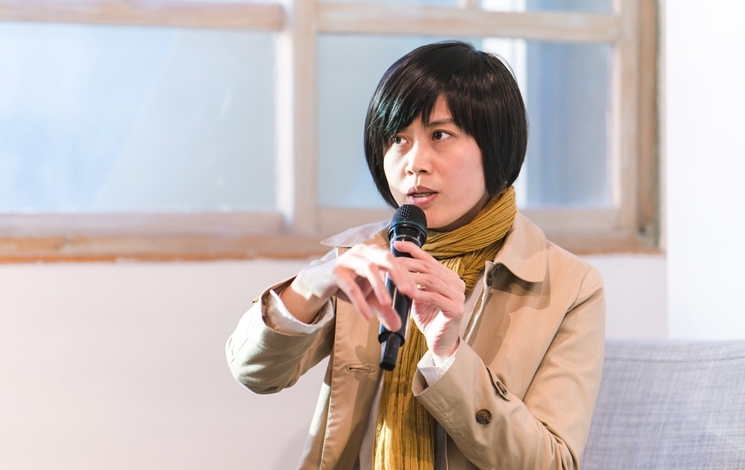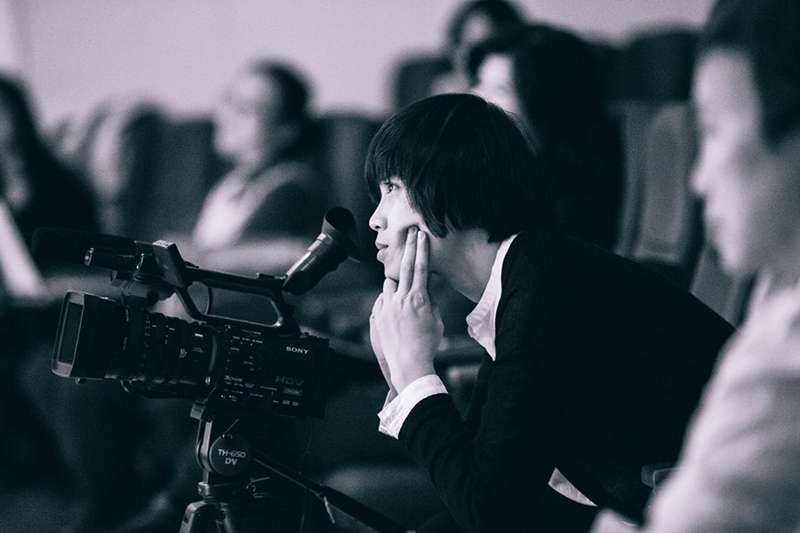What exactly does a "curator" do?
Text | Meng-Hsuan LEE / Editor | Dan-Ying GUO
From: The Storm Media (https://www.storm.mg/lifestyle/704950)
Nietzsche once said, "Fortunately, there is art, which can save me from death." I often contemplate; perhaps, art is the culprit for my emptiness, but it is also through art that I discover life is a more intriguing affair. Exhibitions serve as platforms for such revelations.
Is it due to possessing an artist's background, or is it an implicit habit cultivated as a curator? In Chang Chun-Yi's words, there is an amalgamation of reflections from predecessors, intertwined with her own experiences and sentiments, extending beyond.
As an adjunct assistant professor at the National Taiwan University of Arts and the head of the Collection Research Team at the Museum of Art, Chang Chun-Yi boasts extensive curatorial experience. In 2017, she took on the role of curator for "Air Grass." To her, curation is a platform for unfolding possibilities, laden with uncertainties yet brimming with anticipated space.

Transition from Art to Curation: Natural Progression
Reflecting on the turning point into curatorial work, Chang Chun-Yi paused for a moment and stated, "I didn't choose to become a curator; I was already an artist." As an artist, she shared that the need for exhibitions often arises among herself and friends. In these instances, she naturally takes up the role of coordinator. During her graduate school years, she participated in various exhibitions organized by friends in the art circle. Through hosting solo exhibitions, she learned all the details involved in organizing an exhibition, including fundraising, equipment rental, sponsorship seeking, and promotional design. When officially curating exhibitions for the Museum of Art, she merely brought in and applied the accumulated experience.
Accumulating Experience: Defining Curatorial Style
"The care of others begins with knowing how to take care of oneself."
Chun-Yi Chang explained that the term "curator" in Latin encompasses the meanings of management, care, classification, and the healing of souls. When curating an exhibition, she starts by taking care of herself, envisioning viable operating models for each exhibition. Recalling past exhibition experiences, artists often had to wait until the opening day to see other exhibited works and the overall exhibition. This model frequently forced her to decide on participating works in uncertain situations, affecting the final presentation.
Chun-Yi Chang explained that the term "curator" in Latin encompasses the meanings of management, care, classification, and the healing of souls. When curating an exhibition, she starts by taking care of herself, envisioning viable operating models for each exhibition. Recalling past exhibition experiences, artists often had to wait until the opening day to see other exhibited works and the overall exhibition. This model frequently forced her to decide on participating works in uncertain situations, affecting the final presentation.
To break this separation, Chang Chun-Yi decided to curate exhibitions in the form of creation, attempting to converge participation and creation. Using "Air Grass" in 2017 as an example, she departed from the conventional curator-assigned showcasing model, returning freedom of space and time to the artists. "When artists come, I hope they can explore the museum, the northern art district, and some venues. Then they can tell me which places in these spaces resonate most with them, where they hope their works can come to life." This process also fosters exchanges of opinions among artists, creating the entire exhibition collaboratively with the artist, curator, and the entire curatorial team.

"In my ideal exhibition, it's not just about gathering good works...keeping the works in the exhibition space... It's about the exhibition genuinely reflecting a curator's concerns and reflections on art."
Chang Chun-Yi also shared that her favorite part of the curatorial process is the imaginative discussions with artists. "Feeling the energy of dialogue flowing, sometimes the artwork may not necessarily be completed, but engaging in conversation allows us to delve into the world of imagination, and it brings great joy." In her curatorial philosophy, she maintains a positive affirmation towards all uncertainties. "It's just a part of the process... Many creative and interesting ideas emerge from such uncertain and chaotic states."
Envisioning the Future: The Ideal Role of a Curator
Asked about expectations for the curatorial industry,Chang Chun-Yi replied that she hopes curators can possess an abundance of art historical knowledge while breaking free from constraints. They should retain the creativity, imagination, and free spirit of artists. "Is this too idealistic?" she laughed. "Of course, one also needs the ability to foresee the future to discover genuinely good works and generate concepts with foresight!"
Alternating between cheerfulness and seriousness, Chang Chun-Yi, with her dual identity, combines the sensitivity of an artist with the rationality accumulated in curatorial practice. She has forged her own unique exhibition style, constantly experimenting and challenging herself in constructing every possibility.
 "There is often a disconnect between artworks and exhibitions, as if they are two separate entities," says Chang Chun-Yi, an artist and curator. She has chosen to curate exhibitions using a creative approach, aiming to merge the participation in exhibitions and the act of creation into a unified experience.
"There is often a disconnect between artworks and exhibitions, as if they are two separate entities," says Chang Chun-Yi, an artist and curator. She has chosen to curate exhibitions using a creative approach, aiming to merge the participation in exhibitions and the act of creation into a unified experience.
